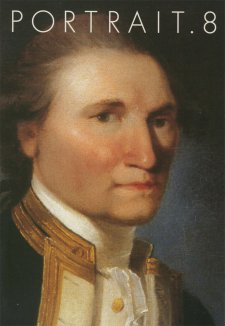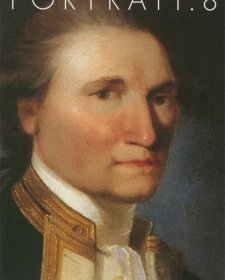From the moment it became possible to acquire the portrait it was clear that the Gallery had to make the greatest efforts to secure the work. The portrait was the only remaining eighteenth-century authentic representation of the great navigator in private hands; if ever there were a public collection in which the painting was to find a home, Australia's National Portrait Gallery was the most appropriate.
Yet the process of acquiring the work was not without difficulties. Firstly, there were legal hurdles to be cleared. Title to the work had been a matter of legal dispute for some years. Secondly, since the painting had been exported to the UK, there was the difficulty of obtaining an export licence to bring the work to Australia.
Thirdly, and not inconsiderably, there was the challenge of raising funds for the purchase. For a Gallery whose annual allocation for purchases is $100,000, the price - 5.3 million dollars - was immense. With such a price-tag it was essential that the Gallery could feel secure about the quality and condition of the work and I went to London to inspect it. Having experienced the work in the flesh and confident that the work had the presence and power of an iconic work, the Gallery could proceed to build a case for its acquisition. Robert Oatley, himself an avid sailor as well as founder of Rosemount Estates, then Australia's largest privately owned wine producer and exporter, was the first enthusiast for the purchase. His commitment to part-fund the acquisition to the extent of 1.25 million dollars enabled the Gallery to seek the support of the Government.
Foremost among supporters of the purchase were the Prime Minister and Mrs Howard, the Gallery's Chief Patron.
With Robert Oatley's contribution and the government's backing, the Gallery had to raise a further 1.25 million dollars to purchase the work. John Schaeffer, Australia's most serious collector of eighteenth and nineteenth-century British art generously offered the funds to complete the purchase. Like the Prime Minister and Robert Oatley, John Schaeffer felt that the portrait was too significant a work to be allowed to slip from the grasp of Australia. He, too, felt the rightness of the National Portrait Gallery as a home for the portrait of so significant a figure in Australian history.
The two donations were the largest individual cash donations given to an Australian public gallery for the purchase of a single work.
When, after months of negotiation to allow for the painting's export from Britain to Australia, the work was unveiled in July 2000, the view was expressed that in every sense the work would act as a 'foundation picture' for the new collection. With the work having hung continuously in pride of place in the Gallery this has certainly proven true. The unprecedented scale of the purchase and the unique conjunction of public funds with the gifts of exceptional generosity of two individuals, signalled to Australia and to the world that Australia's National Portrait Gallery had arrived.











